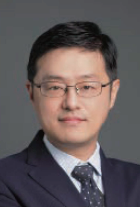JiongYang*
1Materials Genome Institute, Shanghai University, Shanghai, 200444, China;
2Zhejiang Laboratory, Hangzhou, Zhejiang 311100, China
EXTENDED ABSTRACT: Since 2011, there have been emerging several computational material databases, including the Materials Project, AFLOW, Atomly, and MatHub-3d(2d) from MGI, Shanghai University. MatHub-3d aims at the electrical and thermal transport properties; the repository contains over 80,000 inorganic structures, over 30,000 electronic structures, and over 10k electrical transport properties.[!] This talk will cover several recent high-throughput screening works for new thennoelectrics based on the MatHub-3d. In the search of new thennoelectrics, besides the screening from direct calculations of transport properties, the search can also be accelerated by the key features. Based on the previous study that the carrier type of semiconductors relate to the band edge energy position, we propose the strategy of searching n-type Cu-contained compounds by looking for compounds with low-energy conduction band minima. Follow-up theoretical and experimental studies confirm this strategy, and obtain a new thermoelectric compound Culn5Se8 with experimentally ZT of 0.84.[2] In another study, we propose a new concept of "Functional-unit design", borrowed from the "fragment design" in the search of new drug. A linear triatomic bonding is found to be an effective thermoelectric functional unit. This unit is theoretically proved to cause large lattice anhannonicity and band anisotropy, both favoring the the thmoelectric performance. The predicted compound K5CuSb2 has a ZT value of 1.3.[3] The two case studies demonstrate the powerfulness of the combination of material repository and key feature search in accelerating the high-throughput works.
Keywords: MatHub-3d; key feature; energy position; functional-unit design

Jiong Yang, graduated from the Shanghai Institute of Ceramics, Chinese Academy of Sciences, and worked as a postdoctoral fellow at the University of Washington in the United States. He is currently a professor and doctoral supervisor at the Institute of Materials Genome Engineering, Shanghai University. He has long been engaged in material physics related to electron-phonon interaction, thermoelectric material design and material genome related research, and has published more than 160 papers, H-index 44; he has won the 2019 International Thermoelectric Society Young Scientist Award for his work on thermoelectric material genes; core member of the thermoelectric material direction of two national key research and development plan projects.